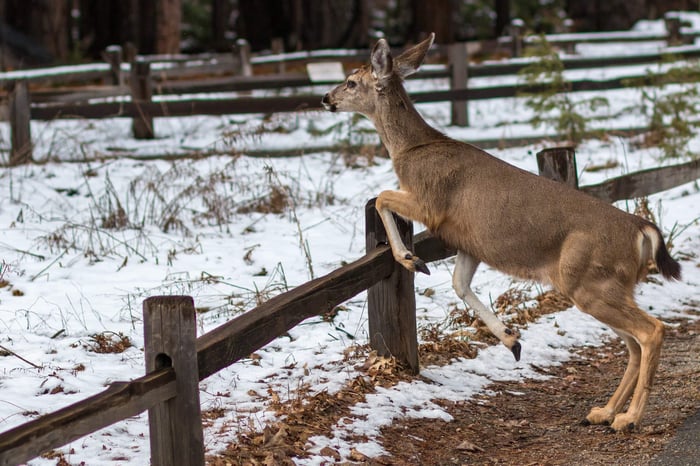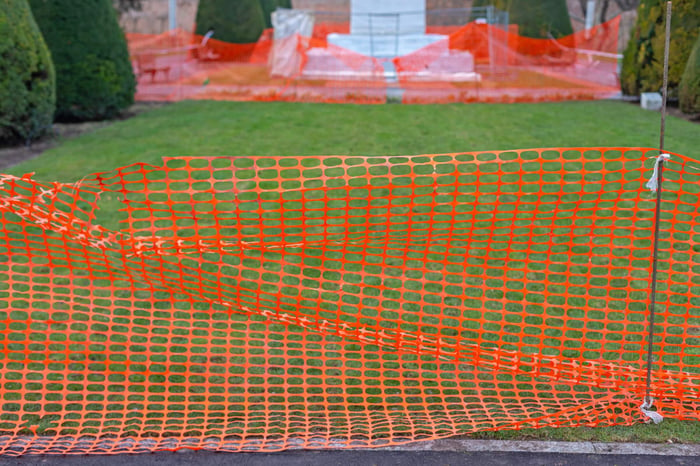
Understanding the Psychology of Deer: A Key to Effective Fencing
When it comes to safeguarding your garden or property from deer, it's crucial to have a deep understanding of their psychology. While physical barriers play a significant role, grasping how deer think and behave allows you to create a fence that not only deters them but also aligns with their natural instincts. In this comprehensive guide, we will delve into the intricate psychology of deer, exploring their behavior patterns, instincts, and preferences, and how this knowledge can inform and optimize your fencing strategy. By incorporating these insights, you can establish an effective and harmonious solution for protecting your cherished garden or property from unwanted deer intrusion.
The Deer Mindset
Deer are creatures of habit. They follow the same trails and feeding patterns, often returning to the same area day after day. This predictability is both a challenge and an opportunity when it comes to fencing.
On one hand, if a deer has been visiting your property for a while, it may be difficult to deter it. On the other hand, you can use this predictability to your advantage. To maximize the effectiveness of your fencing, it is advisable to identify the routes that are frequently used. By focusing your efforts on these specific areas, you can ensure the best possible outcome.
Deer are also naturally cautious animals. They're wary of new objects in their environment, especially if these objects impede their usual routes. However, once they realize that an object isn't harmful, they can become quite bold, even attempting to jump over or squeeze through fences. This is where understanding their psychology comes into play.
Deer fencing works by taking advantage of these psychological traits. It presents an obstacle that deer view as too risky to cross, deterring them from entering your property.
The Power of Visual Deterrents
Deer are highly visual creatures. They rely heavily on their eyesight and have a wide field of vision, making it difficult for them to focus on one thing at a time. This means that when designing your fence, you should aim to disrupt their line of sight as much as possible.
This can be achieved by using visual deterrents such as flags, reflective tape, or even old CDs. These objects will catch the deer's attention and create a sense of unease, making them less likely to approach your fence. This sense of unease is instinctual to deer, as the flash of a white-tailed deer is used to communicate danger ahead to other deer. By mimicking this warning, you are ensuring that your area is a place where they will not be safe. Just be sure to regularly change the placement of these items to prevent deer from getting used to them.
The Importance of Height
Deer are excellent jumpers, capable of clearing heights of up to 8 feet. This means that the height of your fence is crucial in preventing them from accessing your property. Experts recommend a minimum height of 6-7 feet for deer fencing, but if you have a particularly persistent deer population in your area, you may need to go even higher.
However, it's not just the height of the fence that matters but also its positioning. Deer are less likely to jump over a fence if there is an obstacle directly in their path on the other side. This can be achieved by placing shrubs or bushes near your fence or installing angled wires at the top.
Utilizing Scents
Deer also have a keen sense of smell and are highly sensitive to unfamiliar scents. You can use this to your advantage by incorporating scent deterrents into your fencing strategy. The most popular option is predator urine. By spraying this around the perimeter of your fence, you are signaling to deer that there is a potential predator in the area, and they will avoid it instinctively.
Just be sure to regularly change the scents you use as deer can become accustomed to them over time. You can also switch up the types of deterrents you use, such as rotating between different types of predator urine. Be sure to use predator urine of predators that live in or around your area. Deer are unable to recognize predators they have not encountered before and will not be deterred since they will not recognize the scent as a threat.
Material and Visibility
The material of the fence also plays a significant role. While deer can jump high, they are not great climbers. This means that a smooth surface without any footholds is essential in preventing them from scaling the fence. Additionally, using materials with varying levels of visibility, such as wood and mesh, can also be an effective deterrent. Deer are less likely to try and jump over a fence if they cannot see what is on the other side.
The Role of Psychology in Fencing Design
By understanding the psychology of deer, you can design a fence that not only physically deters them but also psychologically discourages them from attempting to breach it. By utilizing visual deterrents, height, and scent deterrents, you can create a multi-layered defense system that addresses different aspects of their behavior.
In addition to these strategies, it's also important to regularly maintain and inspect your fence. If a deer does manage to breach it, repairing any holes or weak points as soon as possible will help prevent them from becoming bolder and more determined to get through in the future.
By considering the psychology of deer when designing your fencing strategy, you can create an effective and long-lasting barrier that protects your property and maintains the natural habits of these beautiful creatures. So, it is essential to understand their behavior and adapt our fencing techniques accordingly to create a harmonious coexistence. With proper planning and execution, we can ensure that both our gardens and the deer population are healthy and thriving. Let's strive towards achieving this balance for the benefit of all involved. Happy fencing!

